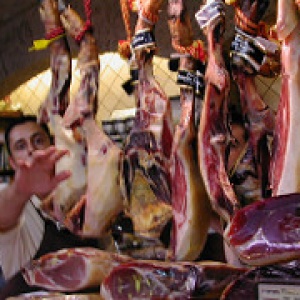
This study evaluates the attainability of sustainable targets for better integrating food security and environmental impacts. Many studies have looked at how much food production could increase given a plausible mitigation solution, for example if food waste was halved from 24% to 12% then an additional 1 billion people could be fed. These studies, however, lack a temporal component that this study attempts to include, which enables evaluation of whether these advances can keep pace with projected increases in human demand.
There are 2 approaches to quantify this temporal challenge: firstly, using historical rates of improvement to project into the future (e.g. crop yield increases), and secondly using pre-determined future targets, like the GHG emission level desired for 2050. They used both of these approaches to examine the extent to which production efficiencies and dietary patterns will need to change by 2050 to maintain current levels of resource use and emissions, which many already argue are unsustainable.
This study projects the global food system requirements for water, nitrogen, carbon dioxide and land to 2050 under future diet scenarios. They project that 776 m3 H2O, 15.3 kg N, 299 kg CO2eq and 0.85 ha are required annually to support an average global diet.
Unsurprisingly animal products account for much of this required water (43%), nitrogen (58%), GHG (74%) and land (87%), but only provide 18% of caloric intake and 39% of protein intake.
Figure: Per capita environmental burdens (EBs) of current diets. Water (A), nitrogen (B), carbon (C), and land (D) footprints associated with the food commodities comprising the average global diet in the year 2009. For N use, the standard deviations of sugar crops and starchy roots were larger than their means. The same was true for carbon use values of starchy roots and vegetables. Uncertainty for beef and milk production only accounts for land use for feed production. Values can be found in Supplementary Table 1a. Pie diagrams (inset) show the relative contribution of plant and animal products to the footprint of current diets.
The authors found substantial changes in the environmental burden of potential future diets; for land use, beef consumption had the most important influence. The absence of pork in pescetarian and vegetarian diets contributed to a substantial reduction in per capita GHG emissions, but conversely, the increased consumption of aquaculture seafood in the GDP-based diet led to a sizeable increase in required nitrogen. Interestingly, fruits contribute the greatest water usage for a Mediterranean diet.
The authors find that projected improvements in production efficiency would not be sufficient to meet future demand scenarios without also increasing the total environmental burden of food. Dietary change is needed and shifting to pescetarian or vegetarian diets reduces environmental burdens relative to other diets and may even decrease all environmental burdens below current levels.
Abstract
Meeting the food needs of the growing and increasingly affluent human population with the planet’s limited resources is a major challenge of our time. Seen as the preferred approach to global food security issues, ‘sustainable intensification’ is the enhancement of crop yields while minimizing environmental impacts and preserving the ability of future generations to use the land. It is still unclear to what extent sustainable intensification would allow humanity to meet its demand for food commodities. Here we use the footprints for water, nitrogen, carbon and land to quantitatively evaluate resource demands and greenhouse gas (GHG) emissions of future agriculture and investigate whether an increase in these environmental burdens of food production can be avoided under a variety of dietary scenarios. We calculate average footprints of the current diet and find that animal products account for 43–87% of an individual’s environmental burden – compared to 18% of caloric intake and 39% of protein intake. Interestingly, we find that projected improvements in production efficiency would be insufficient to meet future food demand without also increasing the total environmental burden of food production. Transitioning to less impactful diets would in many cases allow production efficiency to keep pace with growth in human demand while minimizing the food system’s environmental burden. This study provides a useful approach for evaluating the attainability of sustainable targets and for better integrating food security and environmental impacts.
Citation
Davis, K.F., Gephart, J.A., Emery, K.A., Leach, A.M., Galloway, J.N. and D’Odorico, P., 2016. Meeting future food demand with current agricultural resources. Global Environmental Change, 39, pp.125-132.
Read full article here (paywall).
You can read related research by browsing the following categories of our research library: Carbon Footprint, Food Consumption and Sustainable Intensification.







Post a new comment »